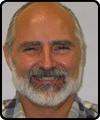Track: Test Strategy, Process and Design
When performing root cause analysis on bugs that were missed in testing but found by customers, there can be many factors that lead to the phrase “test setup did not include xxxx” or “that start condition was never considered (only found in the most honest of teams).” Testers can become so focused on the testing at hand and how to make that as efficient as possible (generally driven by management directives) that environments and tests unconsciously get missed. Broadening the vision to include ideas from chaos and complexity theories can help to discover why certain classes of bugs only get found by the customer. This presentation will introduce these ideas and how they can be applied to tests and test environments. Incorporating randomness into tests and the test environments will be discussed. In addition, thoughts on what to analyze in customer environments, looking through the lens of complexity, will be presented.
Comparisons of environments with and without facets of chaos will be detailed to give the audience concrete examples. Other examples of introducing randomness into tests will be provided.
You will walk away with ideas on why and how to add chaos to your testing, catching another class of bugs before your customers do.
Session Takeaways:
- Ideas on what makes testing and test environments complex
- Benefits of adding chaos to the testing
- Vision perspectives in viewing current test environments and how to disrupt the testing paradigm
Download Presentation
Please Note: The presentations are intended for attendees only. The presentations page is password protected – contact info@softwaretestpro.com for verification of attendance and the password to access the presentation.
Session Speaker:
 James Sivak – Director of QA, Unidesk
James Sivak – Director of QA, Unidesk
Jim has been in the computer technology field for over 35 years. His career as a tester began with the Space Shuttle and over the years has encompassed warehouse systems, cyclotrons, radars, operating systems, security software and now virtual desktops. He is a senior member of the ASQ and is certified as a Software Quality Engineer (CSQE). Jim is passionate about software quality and testing, always looking for process improvements and new ways to accomplish the next set of goals.
